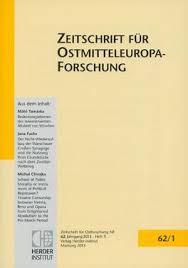Frauen und Memoria in der Dynastie der Piasten im 11. und 12. Jahrhundert. Drei Beispiele
Women and the Piasts’ memoria in 11th and 12th Centuries. Three examples
Author(s): Grzegorz PacSubject(s): Christian Theology and Religion, Gender Studies, Gender history, Middle Ages
Published by: Verlag Herder-Institut
Keywords: Women; Piasts’ memoria; 11th and 12th Centuries;
Summary/Abstract: This article concerns the problem of women’s participation in liturgical commemorations in the Early and High Middle Ages. Three women connected with the Polish dynasty of the Piasts are taken as the example: Salome, wife of Bolesław Krzywousty, coming from the family of the Counts of Berg; Richeza, wife of Polish king Mieszko II, daughter of the Count Palatine Ezzo and Mathild (hence granddaughter of the Emperor Otto II), and finally Regelindis, daughter of Bolesław I Chrobry, wife of Hermann I, the Margrave of Meissen. While Salome was involved in the creation of the Piasts’ memoria, Richeza and Regelindis were not, which appears to contrast with the duty of memory and prayer for the dead, imposed on women by the religious culture of the Middle Ages. The article examines the donations for the redemption of souls made by the abovementioned women, and also it tries to explain the reason why they so differed in their participation in the Piasts’ liturgical memory. Using as the background the wide comparative material from the other countries of Early Medieval Europe, especially the Reich, the author analyses factors which influenced female commitment to the creation and cultivation of the liturgical memory of the kin. The question of women’s participation in the memoria of their families of origin and in those of their husbands is examined and adjudged important in explaining the different degrees of involvement in the Piasts’ commemoration of three female figures studied in the article. Nevertheless, it is the problem of the ownership and the origin of the lands transferred to the ecclesiastical institutions which is recognized as the key factor in creation of the liturgical memory of the dead. The rule that the land given as a pious donation should be used for the redemption of the souls of those who had owned it, explicitly written out by Dhuoda, a Frankish noblewoman, can be noticed in the majority of female donations of the Early Middle Ages, for example in the three monastic foundations of the Empress Adelheid. The origin of the lands donated to the Church is considered to be crucial also in the case of the donations of the women studied in the article and can explain the difference in their degree of involvement in the Piasts’ liturgical memory.
Journal: Zeitschrift für Ostmitteleuropa-Forschung
- Issue Year: 60/2011
- Issue No: 2
- Page Range: 163-185
- Page Count: 23
- Language: German

